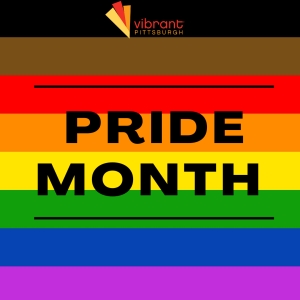From the first brick thrown at Stonewall to the national legalization of gay marriage, the LGBTQIA+ community has been fighting for their right to simply exist. Though we have come a long way in the past 51 years, we still have much further to go. It was not until June 15, 2020 that the Supreme Court ruled in a landmark case that LGBTQ+ workers are protected from job discrimination. Allies and members of the community rejoiced to hear the news they could no longer be turned away from a job or fired purely because of their sexual orientation, gender identity or gender expression.
Although it is a huge step in the right direction for the LGBTQIA+ community, anti-discrimination laws do not necessarily ensure a comfortable work environment. For many who are a part of the community, workplaces can be an uncomfortable or inhospitable place; these workplace culture issues cannot be changed only by the issuance of new protective laws. The struggles many of those who are LGBTQIA+ experience in the workplace are social problems that can only be solved through intentional workplace leadership. Here are a few ways non-LGBTQIA+ employees can support their LGBTQIA+ coworkers and create a friendly and welcoming environment:
Talk about the current struggles of the LGBTQIA+ community.
Silence is complacent and complicit. It is important to acknowledge the problems facing the LGBTQIA+ community, contributing to bigger conversations within the workplace that will possibly lead to employees expressing concerns over the mistreatment of those who are LGBTQIA+. Discuss the struggles in our society as a whole and then search for areas of improvement in the organization. Solutions created by your team will have better buy-in and will make for a more welcoming environment for people of all backgrounds, including the LGBTQIA+ community.
Put an end to discriminatory and offensive jokes.
There is a significant difference between harmless office humor and making a joke at the expense of another person or group of people. Jokes about another person’s sexual orientation, gender identity, or gender expression are never okay to make. If a joke is made around the office that may contribute to an inhospitable work environment for members of the LGBTQIA+ community, do not tolerate it. Make it clear to the person who stated the joke that offensive jokes are not tolerated in the workplace.
Support inclusivity in Employee Business Resource Groups.
Investigate your Employee Business Resource Groups to be certain they are not inadvertently expressing bias and/or discouraging participation from LGBTQIA+ community members through the use of binary language, or heteronormative terms and behaviors.
Educate yourself about sexual orientation, gender, and gender expression.
Take responsibility for educating yourself about the LGBTQIA+ community. Some simple changes can contribute to a healthier workplace environment for members of the LGBTQIA+ community:
· Do not assume your coworkers’ gender. Introduce yourself with your pronouns and respectively ask theirs.
· Do not assume the gender of your coworkers’ spouses/partners.
· Be aware of your biases and work actively to mitigate them – visit Project Implicit to learn more.
· Do not enforce strict gender normative dress codes.
· Do not assume anything about a person based purely on their sexual orientation, gender, or gender expression.
· Do not force a conversation about sexual orientation, gender, or gender expression. If your coworker feels comfortable, they may bring it up on their own.
Additional resources:
About: Lesbian, Gay, Bisexual, Transgender and Queer Pride Month
Lesbian, Gay, Bisexual and Transgender Workplace Issues: Quick Take
LGBT Workplace Issues: Why the majority of LGBT workers still hide their identity at work.
How to Make Your Workplace More LGBT Friendly (& Why You Should)

